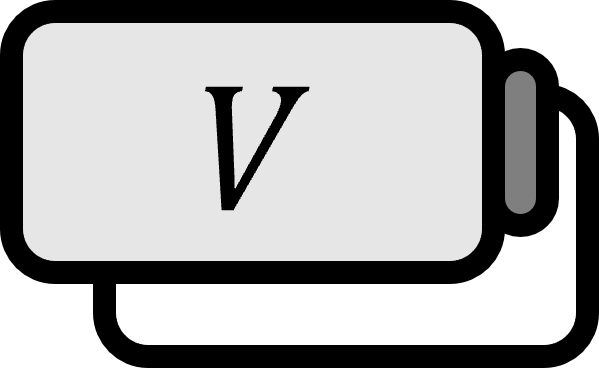Bilinear Forms and Hermitian Forms
Definition1
Let’s say we have two vectors $\mathbf{x}, \mathbf{u} \in \mathbb{R}^{n}$ as follows.
$$ \mathbf{x}=\begin{bmatrix} x_{1} \\ x_{2} \\ \vdots \\ x_{n} \end{bmatrix},\quad \mathbf{u}^{T} = \begin{bmatrix} u_{1} & u_{2} & \cdots & u_{n} \end{bmatrix} $$
For a real constant $a_{ij} \in \mathbb{R} (1\le i,j \le n)$, the function $A : \mathbb{R}^{n} \times \mathbb{R}^{n} \to \mathbb{R}$, defined as follows, is called the bilinear form.
$$ A(\mathbf{u},\mathbf{x}):=\sum \limits_{i,k=1}^{n} a_{ik}u_{i}x_{k} $$
In the bilinear form, if the constant $a_{ij} (1\le i,j \le n)$ is a complex number and satisfies $a_{ij}=\overline{a_{ji}}$, it is called the Hermite form.
$$ A(\mathbf{u},\mathbf{x})=\sum \limits _{i,k=1} ^{n} a_{ik}u_{i}x_{k} = \mathbf{u}^{\ast} A \mathbf{x} $$
Explanation
Simply put, a Hermitian matrix in the context of bilinear form is when the matrix $A$ is Hermitian.
Let’s notate the matrix of constants as follows.
$$ \quad A=\begin{bmatrix} a_{11} & a_{12} &\cdots & a_{1n} \\ a_{21} & a_{22} &\cdots & a_{2n} \\ \vdots & \vdots & \ddots & \vdots \\ a_{n1} & a_{n2} & \cdots & a_{nn} \end{bmatrix} $$
Then, the bilinear form is expressed as a matrix product, which is also called the bilinear form corresponding to matrix $A$.
$$ A(\mathbf{u},\mathbf{x})=\sum \limits_{i,k=1}^{n} a_{ik}u_{i}x_{k}= \mathbf{u}^{T}A\mathbf{x} $$
If a system of linear equations is given as
$$ \begin{cases} a_{11}x_{1}+a_{12}x_{2}+\cdots +a_{1n}x_{n}&=y_{1} \\ a_{21}x_{1}+a_{22}x_{2}+\cdots +a_{2n}x_{n}&=y_{2} \\ &\vdots \\ a_{n1}x_{1}+a_{n2}x_{2}+\cdots +a_{nn}x_{n}&=y_{n} \end{cases} $$
By multiplying each equation by $u_{i}$ and adding them all together, one can obtain a bilinear form as below. $I$ is the identity matrix.
$$ A(\mathbf{u},\mathbf{x})=\sum \limits_{i,k=1}^{n} a_{ik}u_{i}x_{k}=\sum \limits_{i=1}^{n}u_{i}y_{i}=I(\mathbf{u}, \mathbf{y}) $$
Quadratic form is a special case in bilinear form where $\mathbf{u} = \mathbf{x}$.
See Also
Howard Anton, Elementary Linear Algebra: Aplications Version (12th Edition, 2019), p416-417 ↩︎
